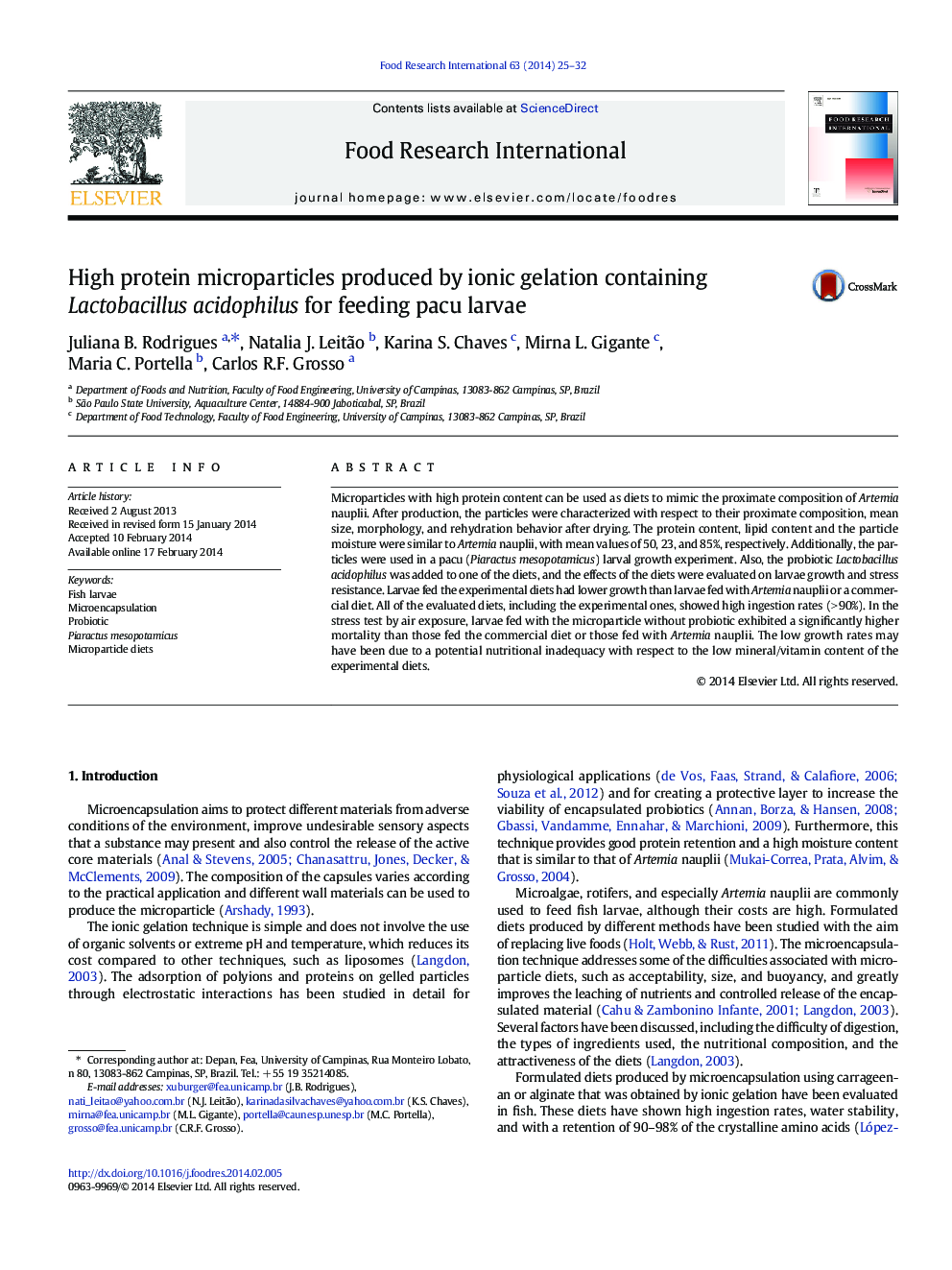| Article ID | Journal | Published Year | Pages | File Type |
|---|---|---|---|---|
| 6395706 | Food Research International | 2014 | 8 Pages |
â¢High protein particles were obtained by ionic gelation and electrostatic interaction.â¢This particles can be used to mimic the proximate composition of Artemia nauplii.â¢Particles resisted drying and showed morphology and size similar as moist particles.â¢Artemia nauplii showed better in vivo results than artificial microparticulated diets.â¢The inclusion of probiotic in the diet promoted lower mortality.
Microparticles with high protein content can be used as diets to mimic the proximate composition of Artemia nauplii. After production, the particles were characterized with respect to their proximate composition, mean size, morphology, and rehydration behavior after drying. The protein content, lipid content and the particle moisture were similar to Artemia nauplii, with mean values of 50, 23, and 85%, respectively. Additionally, the particles were used in a pacu (Piaractus mesopotamicus) larval growth experiment. Also, the probiotic Lactobacillus acidophilus was added to one of the diets, and the effects of the diets were evaluated on larvae growth and stress resistance. Larvae fed the experimental diets had lower growth than larvae fed with Artemia nauplii or a commercial diet. All of the evaluated diets, including the experimental ones, showed high ingestion rates (>Â 90%). In the stress test by air exposure, larvae fed with the microparticle without probiotic exhibited a significantly higher mortality than those fed the commercial diet or those fed with Artemia nauplii. The low growth rates may have been due to a potential nutritional inadequacy with respect to the low mineral/vitamin content of the experimental diets.
